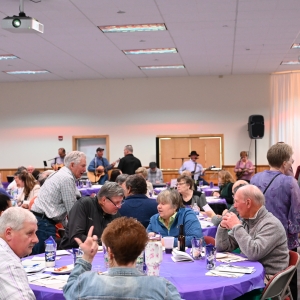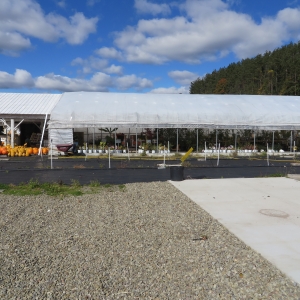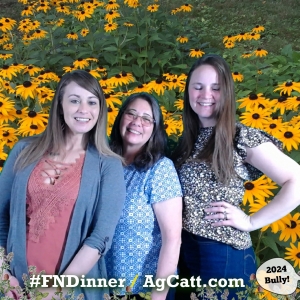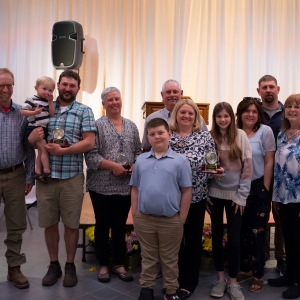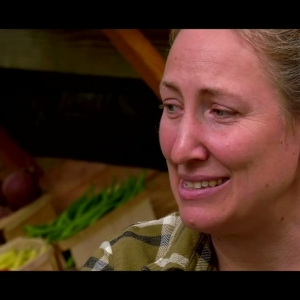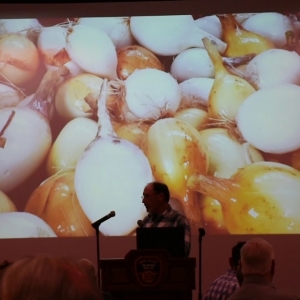Other Ag News:
(Washington, D.C., April 21, 2025) – U.S. Secretary of Agriculture Brooke L. Rollins joined the 2025 White House Easter Egg Roll on the South Lawn alongside American egg producers.
(Washington, D.C., April 18, 2025) – This week, U.S. Secretary of Agriculture Brooke Rollins visited Central Pennsylvania where she toured Talview Dairy, participated in a farmer roundtable at Martin’s family farm, and visited the Bank of Bird-in-Hand mobile bank to discuss agricultural lending with community leaders. Secretary Rollins was joined by Senator Dave McCormick, House Agriculture Committee Chairman GT Thompson, and Representatives Dan Meuser, Rob Bresnahan, and Lloyd Smucker.
(Washington, D.C., April 17, 2025)—Today, the U.S. Department of Agriculture issued a memorandum to all state agencies administering the Supplemental Nutrition Assistance Program (SNAP) making it clear states must ensure SNAP benefits are provided with an expectation that those who can work, do.
(Washington, D.C., April 16, 2025) – U.S. Secretary of Agriculture Brooke Rollins wrapped up a visit to Lubbock, Texas, where she joined House Budget Chairman Jodey Arrington (TX-19) for a tour and roundtable discussion at the USDA Cotton Classification Complex on the Texas Tech University campus. During the roundtable, she was joined by sorghum, beef, peanut, dairy, and corn producers as well as agricultural leaders from across Texas.
(Little Rock, AR, April 15, 2025) – U.S. Department of Agriculture (USDA) Secretary Brooke L. Rollins joined Arkansas Governor Sarah Huckabee Sanders today as the Governor submitted a waiver to USDA to ban soda and candy from and include hot rotisserie chicken in Arkansas’s Supplemental Nutrition Assistance Program (SNAP).
For Immediate Release
Contact: Laura Zaks
National Sustainable Agriculture Coalition
Email: press@sustainableagriculture.net
Tel. 347.563.6408
Release: NSAC Responds to USDA Announcement on Partnerships for Climate-Smart Commodities Program Widespread Farmer Support Informs USDA Decision to Rebrand Program and Restart Payments, but Overhaul Nonetheless Disregards Lawful Agreements with Farmer-Serving OrganizationsWashington, DC, April 14, 2025 – Today, the National Sustainable Agriculture Coalition (NSAC) responded to the US Department of Agriculture (USDA)’s announcement on the Partnerships for Climate-Smart Commodities Program (PCSC) being reframed and continued for projects that meet newly created criteria, a move met with some optimism as well as significant concerns.
”After months of self-inflicted uncertainty, today’s announcement is a significant and welcome step toward the clarity that farmers, ranchers, and the organizations who support them have desperately needed, particularly the farmers who have spoken in favor of the program. Unfortunately, this clarity will also bring unnecessary hardship nationwide to farmer serving organizations and likely farmers as a result of USDA changing program requirements and cancelling projects mid-stream,” said Mike Lavender, NSAC Policy Director.
The USDA announcement, which reframes PCSC as the Advancing Markets for Producers initiative, indicates that USDA will review existing grant agreements for the amount of project funds that go to producers, and whether grant recipients have enrolled and paid at least one producer as of December 31, 2024. The announcement also states that USDA will honor all eligible expenses incurred prior to April 13, 2025, but does not provide clarity on whether grant recipients can make modifications to meet the new criteria.
“Direct producer payments are important, and strong cost share can make all the difference for many farmers and ranchers seeking to adopt new practices in their operations. However, it is disappointing to see the administration disinvest in other valuable elements of PCSC projects beyond direct payments, including technical support for producers designing, implementing, and maintaining conservation systems. Coupling this announcement with USDA’s reductions in force, the administration must take every opportunity going forward to increase access to technical assistance and support the staffing levels necessary to provide efficient and dependable customer service for our farmers – those working directly with USDA and those working with the farmer-serving organizations it partners with,” commented Richa Patel, NSAC Policy Specialist.
###
About the National Sustainable Agriculture Coalition (NSAC)The National Sustainable Agriculture Coalition is a grassroots alliance that advocates for federal policy reform supporting the long-term social, economic, and environmental sustainability of agriculture, natural resources, and rural communities. Learn more: https://sustainableagriculture.net/
The post Release: NSAC Responds to USDA Announcement on Partnerships for Climate-Smart Commodities Program appeared first on National Sustainable Agriculture Coalition.
(Washington, D.C., April 14, 2025) – U.S. Secretary of Agriculture Brooke Rollins today announced the cancellation of the Partnerships for Climate-Smart Commodities (PCSC). Following a thorough line by line review of each of these Biden era partnerships, it became clear that the majority of these projects had sky-high administration fees which in many instances provided less than half of the federal funding directly to farmers. Select projects may continue if it is demonstrated that a significant amount of the federal funds awarded will go to farmers.
(Washington, D.C., April 14, 2025) — U.S. Secretary of Agriculture Brooke Rollins today announced the latest slate of presidential appointments, bringing new leadership to key roles within the Department. These appointees have been selected to implement President Trump’s America First agenda at the U.S. Department of Agriculture (USDA), ensuring the needs of America’s farmers, ranchers, and producers remain a top priority.
Gesturing toward thousands of neatly aligned logs — some sprouting mushrooms, others with mycelial potential hidden from sight beneath rugged bark — Steve Sierigk, the co-owner and co-operator of Hawk Meadow Farm, welcomed visitors to the forest where he grows his mushrooms. The scene, both organic and orderly, harmonized with the towering pines that framed the laying yard.
Steve Sierigk, co-owner and co-operator of Hawk Meadow Farm, speaks to workshop attendees about how to inoculate a drilled log bolt. Rich Mattingly / Cornell Small Farms Program
“Shiitake grown on logs isn’t just about food, it’s about land stewardship,” he explained to rapt workshop participants, his affable voice ringing through the sun-dappled clearing. Steve described the delicate partnership between artful log arrangement and care and the wild nature of the fungi, which he has grown for four decades. “When we cut some trees to become mushroom logs we then also encourage or plant others, and you become an active participant in where the forest is going. It becomes a beautiful cycle.”
In October, Hawk Meadow Farm near Ithaca, NY, hosted a hands-on shiitake cultivation workshop, sponsored by the Cornell Small Farms Program, drawing a diverse group of gardeners, homesteaders, and farmers from underserved communities, eager to learn the art of growing shiitake mushrooms from logs. The workshop blended ecological philosophy and historical context with practical skills, from inoculating logs to fostering resilient farm ecosystems.
“The highest quality mushrooms are grown this way, in harmony with the land,” said Steve, emphasizing the decentralized, small-scale ethos of the practice: “In Japan a shiitake farm may have half a million logs. Here, it’s a few thousand. But every log represents a softer ecological footprint compared to other growing methods, and it feeds the soul.”
Shiitake cultivation in Japan began centuries ago when wild shiitake was collected in the forest, long before modern, log-based methods were used. “Shiitake” means “mushrooms of the shii tree,” one of the trees on which shiitake grows that has similar qualities to oak. Shiitakes have long been highly prized for their flavor and there are centuries-old examples of their use in folk medicine. Samurai warriors, living near forests where shiitake grew, often forbade others from collecting it, coveting it for its health benefits
Worldwide, shiitake is the second most-cultivated mushroom after the common white mushroom westerners may be more familiar with. Shiitake’s popularity goes beyond flavor. When cooked, it imparts a full-bodied aromatic but distinctly pleasant umami taste to the dish while maintaining its own original color and chewy texture. Fresh shiitake resists both bruising and spoilage remarkably well compared to other commercially grown fungi. Dried shiitake, which is also widely available commercially, is convenient and inexpensive to store and transport. The USDA has published research showing shiitake exposed to sunlight while drying can store the daily recommended adult minimum requirement of vitamin D in just a single gram, thanks to a natural chemical compound called ergosterol.
Shiitake’s rich history and culinary appeal set the stage for a deeper understanding of its role in sustainable agriculture at the workshop. At Hawk Meadow Farm, this tradition isn’t just preserved – it is actively cultivated through hands-on education in modern, small-scale farming practices.
Heather Gable, workshop participant, steadies a log bolt on a frame used for inoculating logs with mushroom spawn. Rich Mattingly / Cornell Small Farms Program
Gathering the workshop participants in a convivial circle near the beginning of the workshop, Steve and Anne Sierigk explained the origin of their mushroom growing enterprise. “Shiitake was pretty much unknown in the US in the 1980s. It wasn’t allowed to be grown domestically because the USDA was afraid it would escape mushroom yards and become invasive. Buying dried, imported mushrooms was the only way you could get them. In 1976 the ban was lifted as it was realized that shiitake was not aggressive,” explained Steve, continuing, “I got into it through the macrobiotic diet community in Ithaca. There were maybe 1,000 macrobiotics in the area, and we would have these big potlucks. I was in a circle that really embraced that diet. We would buy mushrooms in bulk from Japan and one day I saw an article about growing it in the traditional Japanese style in logs in the woods. I thought I might try it on a garden scale and things grew from there after these techniques proved to be successful.”
From these early beginnings, Steve and Anne built Hawk Meadow Farm into a hub for sustainable shiitake cultivation, where their knowledge now supports a new generation of growers. The spirit of stewardship was on full display at the workshop, where participants weren’t just learning to grow mushrooms but also engaging with a philosophy that intertwines ecological care, food security, and economic resilience.
Connor Youngerman, Cornell Small Farms Program Agroforestry and Mushroom Specialist, displays a log with shiitake mushrooms fruiting for workshop participants while Anne Sierigk, co-owner and co-operator of Hawk Meadow Farm looks on. Rich Mattingly / Cornell Small Farms Program
Connor Youngerman, agroforestry and mushroom specialist with the Cornell Small Farms Program, echoed this vision. “Shiitake cultivation combines sustainable woodlot management, economic diversification, and food security,” he said. “It’s a system that’s easy to learn, scalable, and sparks creativity. Everyone should grow mushrooms!”
Participants took turns practicing drilling holes into cut hardwood logs, or bolts, inserting spawn, and sealing the holes with wax – a process requiring precision, but easy to learn. María José Oviedo Ventura, a bilingual agricultural educator with the Cornell Small Farms Program, ensured Spanish-speaking farmers could fully engage. “Live translation allowed attendees to ask direct questions and contribute to discussions,” she said. “It transformed the space into one where everyone belonged.”
The workshop also bridged experience levels. Tricia Park, a farmer previously enrolled in the Cornell Small Farms Program’s outdoor mushroom course on a veteran scholarship, aims to harvest her first crop this fall. “Customers want this,” she said. “It complements our farmstand and connects people to resilient food systems. Since we have been farming for a couple of decades already, we have our core enterprises of grassfed beef, pasture and woodland-raised pork, and a market garden that supplies our farmstand plus a small maple syrup operation, firewood, and skin care products. Any added enterprises have to be carefully thought through in order to fit in with all that. Growing shiitake on logs should fit in and complement what we do now while helping us with resiliency both on our land and with our bottom line.”
Park appreciated the workshop’s practicality. “I saw how to stack logs, deter slugs, and use tools like the angle grinder adapter – small details that prevent big headaches,” she said. “The hosts’ low-cost, low-infrastructure approach proved this is doable.”
Beyond technique, the day repeatedly highlighted mushrooms’ role in regenerative agriculture. “Every log is an act of stewardship,” Steve noted. “We manage these woods for long-term health, culling invasives and planting species like locusts and white oaks. The trees we nurture will outlive us. We are meant to be around trees and forest health is key to climate and soil stabilization” Youngerman added, “Shiitakes build climate resilience. They recycle hardwood waste into food, enrich soils, and promote healthy forests.”
Anne Sierigk says the process of growing mushrooms doesn’t just help the forest land she stewards but helps her heal herself. “I think about how stressed people are in our culture – how they work endlessly, chasing an end goal, but often their jobs don’t feed their souls. We have that perspective of being over 70 and a lot of people our age are missing out on being healthy. We love being in the woods and being outside. During our workshops we like to make people think about their connection with the work – what are you doing that nurtures yourself? Stress is a huge factor in how healthy we are. I urge people to find that joy in life. Find whatever it is that feeds your soul. You have to have fun and if you’re not, you have to reexamine your life.”
Steve, echoing Anne’s sentiments, said, “The thing about fun is even if I have a deadline and it starts to feel like drudgery while sorting mushrooms and filling orders…when I’m doing all that stuff I think about how remarkable this all is. That I’m outside and creating habitat and it’s really cool that my job is growing high quality healing foods while improving our woodlands and creating wildlife habitat. It humbles you, and you feel grateful that you’re one little piece of a grander natural design system.”
For the workshop participants standing around a dunking tub, where the spawn logs are regularly immersed to encourage production, the topic of discussion moved to the economic viability of scaled-up production.
Steve, fielding questions, explained, “When you’re trying to visualize something, like an enterprise, it’s easy to go to a place where you want to maximize your production. We’ve become generalists, just like some of the mushroom species we grow. We can tell if the scale stresses us out and you’ll have to make that decision for yourself and your farm. At one point, we were getting a lot of good leads for how to expand the mushroom log business and getting approached by larger companies about producing secondary products. It was feeling like we were in a factory, and we had to do what felt right for us.”
Assisted by Connor Youngerman (L) Cornell Small Farms Program Agroforestry and Mushroom Specialist looks on as Brendan Gaffney drills holes in a log bolt with a specialized bit attached to an angle grinder, one of the techniques workshop participants were instructed on. Rich Mattingly / Cornell Small Farms Program
For attendees like Olga Nedlin, a budding farmer veteran seeking land to start her own shiitake enterprise, these lessons on balancing scale and sustainability provided a realistic roadmap for launching their own mushroom enterprises. “I realized how simple it could be. I want to start with 1,000 logs. I did the math and six hours of work a day once the logs are going could make it viable for me,” she said. Her motivation? “Once you taste fresh shiitake from the air fryer, you have to have more.
One Spanish-speaking participant reflected after the workshop on why he decided to invest in shiitake cultivation: “It was a mix of things. I had seen them in the market before, and I noticed that many people bought them. Also, when I made a list of all the instruments needed, I realized I already had most of them, or that buying what I was missing wouldn’t be too expensive. I even had wood for the logs. Therefore, we decided to primarily grow shiitakes, but also experiment with other mushrooms in small quantities to see how customers would react.”
The workshop also helped him determine the cost versus benefit of growing shiitakes. “Steve mentioned a lot of numbers and details, like the pounds he could yield from a log. Afterward, my family and I calculated the costs and decided it was worth the investment. We’ve started to incorporate shiitake, and we think it could be expanded in the spring or next season.”
As the late-lingering sun stretched golden fingers across Hawk Meadow Farm, Steve took in the group’s energy. “The future of agriculture lies with small farms. When people see how this work nourishes both the land and their own futures, they leave inspired.”
Participants departed not just with inoculated logs, but with a deeper understanding of their connection to something greater. Steve’s parting words underscored his belief that growing mushrooms in the woods is more than a method — it’s an act of collaborative stewardship and community building. “There are countless support networks within this decentralized movement to help you start and sustain outdoor mushroom cultivation. But this community is about more than economics. This isn’t just farming — it’s taking part in something timeless that connects us deeply to nature.”
The post The Future of Small Farming is Fungi appeared first on Cornell Small Farms.
What is Avian Influenza, and where does it come from?
Highly Pathogenic Avian Influenza is a contagious poultry virus that has caused significant financial losses to the U.S. poultry industry and disruptions to the nation’s supply of eggs and poultry meat. The highly pathogenic strain, H5N1, has been circulating in the U.S. since February 2022 resulting in the death and euthanasia of over 148 million birds in nearly 1,500 commercial and backyard flocks. This is the nation’s largest animal health emergency.
Waterfowl, both wild and domestic, act as the primary carriers, which can spread the virus to other wild bird and domestic poultry populations. Wild waterfowl populations are monitored, and hunters have the option to send their harvested birds in for testing. Wild waterfowl regularly carry low-pathogenic strains of the virus, but it can easily mutate to a highly pathogenic strain, as we’ve seen with this outbreak. The disease has spread to mammalian and avian scavengers that feed on the carcasses of dead, infected wild waterfowl. It has also been found to spread to poultry from infected dairy cattle.
Is HPAI in avian species a concern for NYS?
Chickens coming out of their coop into a grassy field. RJ Anderson / Cornell Cooperative Extension
Yes. Since the February 2022, we have seen 28 cases of this disease in domestic flocks in NYS. Of those, 2 flocks were commercial, 7 were identified at live bird markets, and 19 were found in backyard flocks. Affected flocks have been identified in Columbia, Dutchess, Fulton, Kings, Monroe, Onondaga, Orleans, Putnam, Queens, Suffolk, Sullivan, Tomkins, Washington, Wayne, and Ulster Counties. These flocks have been euthanized to help control the spread of the virus.
It is difficult to predict how large of an impact the disease will have moving forward, but the risk posed is significant since the virus is present in the environment via wild bird hosts. To date, there have been 472 positive wild bird cases across most counties in the state. The majority of wild birds identified have been waterfowl, with some corvids (crows, ravens), and some birds of prey. HPAI has also been found in mammalian scavengers that feed on the carcasses of infected wild fowl.
For more information on current detections on HPAI in wild birds, commercial flocks, and backyard flocks, visit: https://www.aphis.usda.gov/aphis/ourfocus/animalhealth/animal-disease-information/avian/avian-influenza/2022-hpai
While the disease is circulating in wild and domestic bird populations, there is no need to panic, but there is need to be on high alert. Poultry owners should be prepared to report any suspicious disease symptoms in their flocks.
How does HPAI spread?
HPAI lives in the respiratory and/or intestinal tract of birds. It can be picked up from contact with infected feces, surfaces, or through the air, though aerial transmission from farm to farm is unlikely. It can be transported on infected feed, clothing, or equipment. It can also be spread through wild bird populations encountering domestic birds and can be transported through and on other living creatures, such as dairy cattle, rodents, and insects. Once on the farm, the disease is readily passed from bird to bird, infecting an entire flock quickly.
Transmission into poultry flocks from dairy cattle is not yet a concern for NYS farms, since it has not yet been identified in our herds. Regular milk testing to confirm that the virus has not entered our state’s dairy farms is being conducted across the state.
Which types of birds are affected?
Domestic poultry flocks of any size, from back yard to commercial, and any species can be affected. Game birds and ratites (emu, ostrich, rea) can also contract the disease. Waterfowl may be affected and not show symptoms.
Affected wild bird populations are predominantly waterfowl, which can carry the disease and not show symptoms. However, other wild birds, including birds of prey, game birds and corvids (crows, ravens) can be infected with the virus, too.
What are the symptoms of HPAI?
Any birds can be affected, but birds other than waterfowl react most strongly to the virus. Poultry infected with HPAI may show one or more of the following symptoms:
- Sudden death without clinical signs
- Lack of energy and appetite
- Decreased egg production or soft-shelled or misshapen eggs
- Swelling of head, comb, eyelid, wattles, and hocks
- Purple discoloration of wattles, comb, and legs
- Nasal discharge, coughing, and sneezing
- Discoordination
- Diarrhea
Large death losses without any clinical signs or explanation like predators or the weather is known to be a hallmark of the virus. In some cases, expect the majority of the flock to die within 48 hours of the first symptoms appearing. Regardless of how the disease presents, a large portion of the birds in a flock will be affected. Waterfowl may carry the virus but not show symptoms.
With any suspicious disease, rule out obvious causes such as predation and weather issues. Deaths that are in the realm of “normal” don’t need to be reported.
What happens if I think I have the disease in my flock?
Since February 2022, we have seen 28 cases of Highly Pathogenic Avian Influenza in domestic flocks in NYS. Jason Koski / Cornell University
Report it! If a large number of your birds are sick or dying, it’s important to report it immediately so that we can stop the spread to other flocks. This helps protect the welfare of the flocks around you, the livelihoods of farmers, and the pleasure that backyard flock owners get from their poultry. To report, you can call:
– NYS Department of Agriculture & Markets: 518-457-3502
– USDA (United States Department of Agriculture): 866-536-7593
– Your local Cornell Cooperative Extension Office: https://cals.cornell.edu/cornell-cooperative-extension/local-offices
The first step in reporting is to answer a few questions about what’s going on with your birds. If your flock is suspected of having the virus, a field veterinarian from NYS Ag and Markets will come out and evaluate your flock. They will take samples from live birds, dead birds, and your birds’ housing. These samples will be sent to a testing laboratory with preliminary results expected in 24 hours. Until then, the veterinarian working on your case will help you put measures in place to make sure that if the disease is on your property, it doesn’t spread further. Usually, that means that only people who are authorized to work with your poultry are allowed onto and off of your property, and the movement of live poultry and poultry products (meat, eggs, feathers, etc.) is not allowed.
While the testing is occurring, you’ll work with the USDA to inventory your poultry. In the case of a positive test result, all flocks on your property will be euthanized to stop the spread of the disease. The inventory will help determine the indemnity (payment) for your flock. This information will not be shared with other producers, the municipality, county, or town.
The goal of the USDA is to depopulate your flock within 24 hours of a positive result. This 24-hour window is critical to keep the virus from building in the environment, potentially spreading to other flocks and re-entering wild bird populations. The veterinarian working on your case will work with you to be sure that your birds are euthanized quickly and humanely.
What can I do to keep my birds safe?
Because there is not a vaccine currently available in the U.S. for this disease, keeping it out through biosecurity is going to be the best course of action. The easy-to-follow biosecurity principles below are for all bird species, and can go a long way to keeping your birds safe from disease:
- Protecting against exposure to wild birds or restricting access to water or ground contaminated by wild birds. For many flock owners, this means keeping flocks indoors until the threat has passed. For others, it can mean not letting poultry on pastures that wild birds frequent and not allowing poultry access to open water sources visited by wild birds.
- Closing bird areas to nonessential personnel or vehicles
- Providing poultry caretakers with clean clothing and disinfection facilities and directions for their use
- Thoroughly cleaning and disinfecting equipment and vehicles (including tires and undercarriage) when entering or leaving the farm
- Halting the borrowing or lending of equipment or vehicles
- Stopping visits to other poultry farms, exhibitions, fairs, and sales or swap meets. If visits must occur, poultry caretakers should change footwear and clothing on their return to the farm.
- Banning bringing in birds from slaughter channels (auctions, processing facilities) to the farm
- Establishing an “all-in, all-out” flock-management policy, where only one age of birds is kept on your premise at one time.
If you are a poultry hobbyist or small flock owner, we encourage you to look through the biosecurity resources developed by USDA-APHIS’s Defend the Flock Program.
To read more answers to frequently asked questions, visit https://cals.cornell.edu/news/2025/02/frequently-asked-questions-about-bird-flu-new-york-state
NY EDEN is a collaborative educational network based at Cornell University and dedicated to educating New York residents about preventing, preparing for and recovering from emergencies and disasters.
Disaster and Ag Assessments
As reminder for next year’s ag assessment: if you’ve had trouble grossing the $10,000 in farm income for Agricultural Assessment due to an HPAI outbreak on your farm, make sure to ask your local Cornell Cooperative Extension educator to see if there’s an exception that can be made.
For producers with other questions and concerns:
Please contact the NYS Department of Ag and Markets at 518-457-3502. This number is for the Albany office.
This article was originally printed in CALS News.
The post Frequently Asked Questions about Bird Flu in New York State appeared first on Cornell Small Farms.
Pages
Signup for the Ag Newsletter
Get the freshest farm news, events and updates from in and around Cattaraugus County, NY at least once a month! Go signup!
Other ways to stay connected:
Get Involved in Farming
Resources for Starting a Farm in Cattaraugus County
Profile of Cattaraugus County soils
Agriculture Career Exploration
Questions about farming? Find out Who to Call




